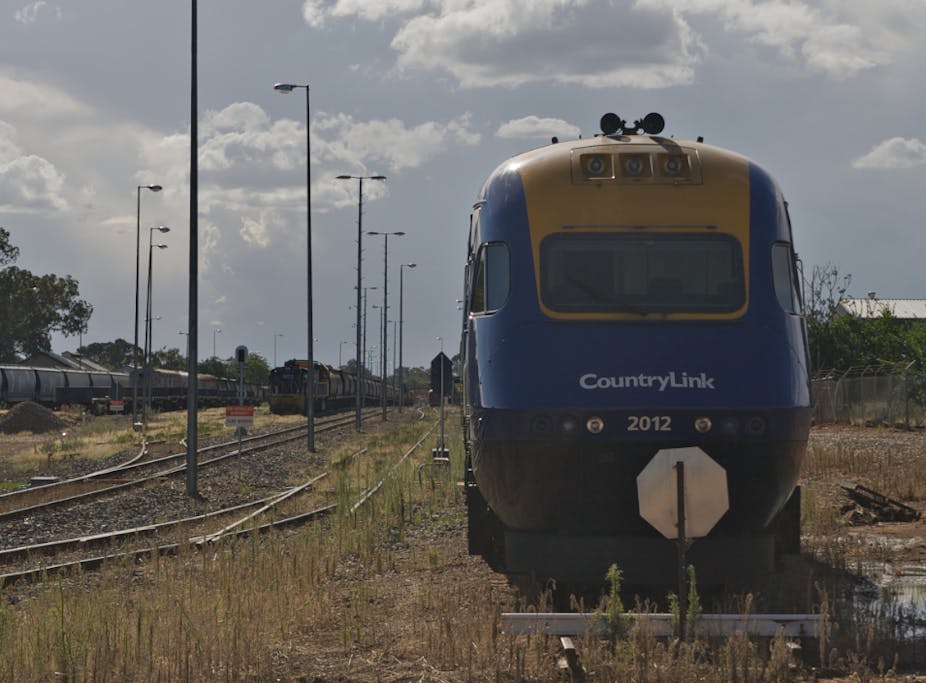The Australian Government has released an “implementation” study for high speed rail (or HSR) on the east coast with a further study to follow.
The proposal looks at corridors between Melbourne, Sydney and Brisbane. It includes the option of three-hour travel times between Sydney and Melbourne, with tickets costing around $100.
With the projected price of the project starting at around $60 billion, and Australia’s chequered history with HSR, it is not unreasonable to ask whether the project will commence. In this case, would Sydney to Newcastle take preference over Sydney to Melbourne?
Well-designed HSR operating between Sydney and Melbourne and/or Sydney and Brisbane would reduce demand for both aviation fuel and a second Sydney Airport.
There would also be a reduction in greenhouse gas emissions, as HSR is more energy efficient than either planes or cars.
However, building HSR is costly, and there are many competing demands for new rail infrastructure.
Sydney’s urban rail system is in need of expansion and upgrading (including completion of an Illawarra Macarthur link to reduce freight train numbers on congested lines).
Intercapital-city-track between Melbourne, Sydney and Brisbane need track straightening and strengthening. In addition, regional grain lines need rehabilitation.
Whether or not HSR proceeds, more work is required on the existing rail system.
HSR in Australia - a bumpy history
HSR is currently defined as electric passenger trains operating on steel rails at speeds of 250km/h.
HSR began in 1964 with the Tokaido Shinkansen between Tokyo and Osaka. Since then, it has operated with an impeccable safety record and an enviable record for punctuality.
In 1981, France introduced their version of HSR, the Train à Grande Vitesse or TGV.
Three years later, CSIRO proposed a Very Fast Train or VFT to link Sydney, Canberra and Melbourne using TGV technology.
The VFT was subject to extensive investigation by the Victorian and ACT governments and a Senate Committee. After a somewhat negative approach by government to the concept of a VFT, the proposal lapsed in 1991.
In 1996, the Australian, NSW and ACT governments invited expressions of interest from the private sector to provide an improved Sydney-Canberra train service. Four detailed proposals were made:
an electric tilt train (similar to that introduced in 1998 between Brisbane and Rockhampton on track upgraded for faster and heavier freight trains),
a diesel-electric tilt train (as used in Europe),
Speedrail, using TGV technology,
a Maglev.
In August 1998, Prime Minister Howard announced with much fanfare that Speedrail had been invited to prepare and submit a “proved up bid” at “no net cost to the taxpayer”; the bid cost over $20 million to the proponents.
However, in December 2000, the Australian government announced that it would not proceed further with Speedrail, and instead commissioned an East Coast High Speed Train Scoping Study.
This was released in late 2001, and again, HSR did not proceed in Australia. At that stage, only six countries had HSR.
Twelve countries now have HSR (four in Asia, five in Western Europe, plus England, Russia and Turkey).
It is clear that HSR is now a mature technology. Our population has also grown. So there is a better chance for HSR in Australia this time around.
A better way to get around?
Future intercapital-city passenger movements in Eastern Australia face two broad scenarios.
Business as usual would be continued reliance on planes and cars for passengers.
The alternative is development of HSR for intercity passengers.
The first scenario of “business as usual” has already been questioned on various grounds. One of the most compelling arguments is the need to deal with Sydney airport congestion.
However, it is a resilient scenario. If business as usual does continue “as usual”, the cost of implementing HSR in Australia may then be regarded as outweighing the benefits.
The second scenario is more likely to result if international oil prices move to, and remain at, high levels. Under this scenario, the costs of flying and driving between major cities could expect to rise significantly, with effects on business productivity. HSR construction and operation would then be more appealing.
In any event, this time around, future HSR corridors should be identified and preserved.

